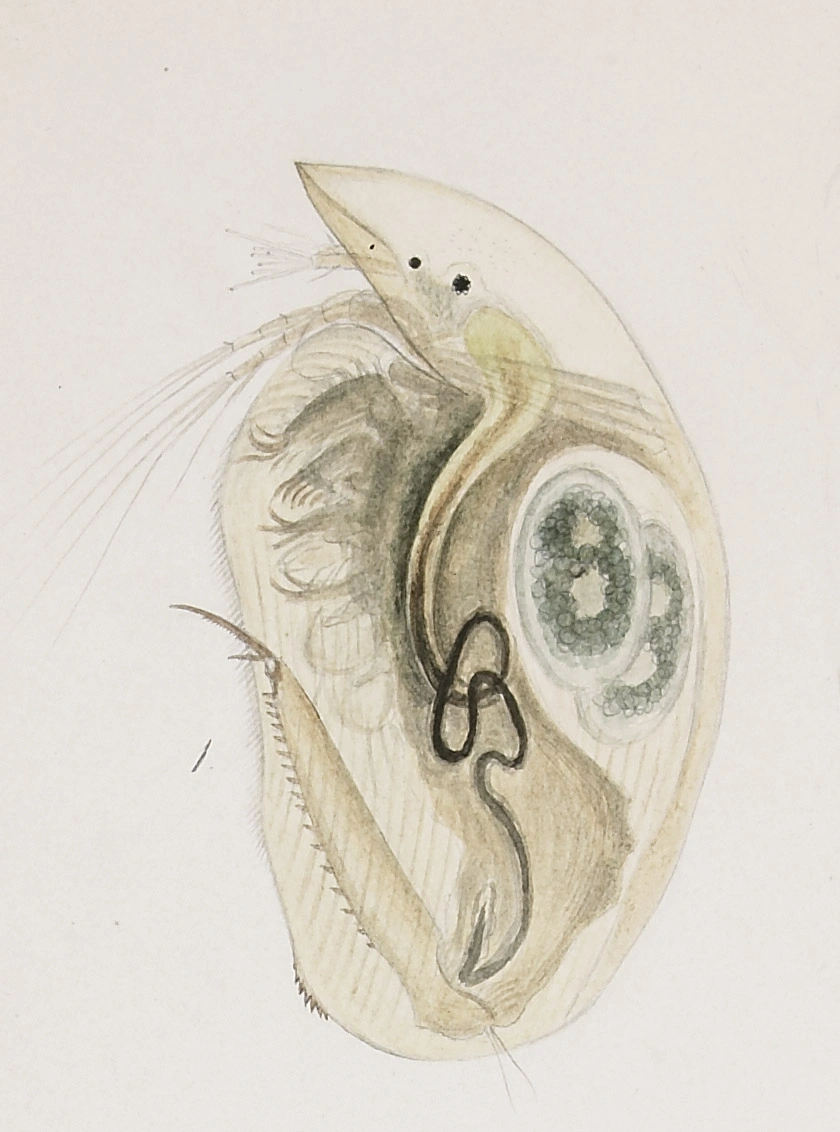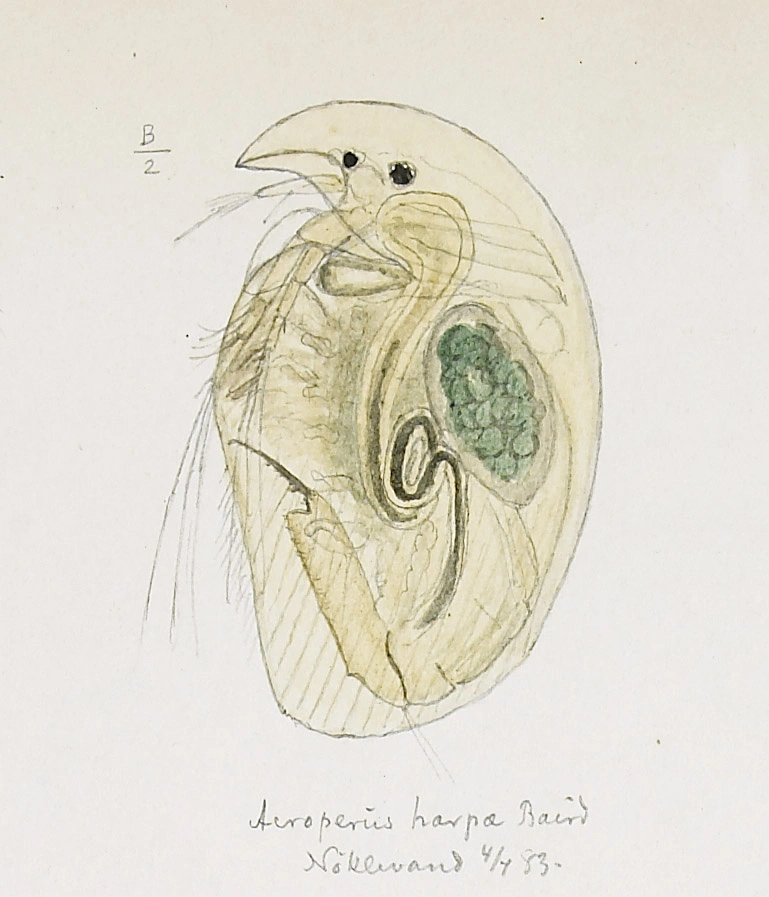Camptocercus lilljeborgi
Camptocercus lilljeborgi is characterized by its postabdomen which is particularly long and slim, tapering evenly towards the end. It is found in a limited number of localities in South Norway east of Oslo where it lives in different types of vegetation.
Key characteristics
Camptocercus lilljeborgi (female)
Camptocercus lilljeborgi resembles its close relative C. rectirostris by having the same oval form but with the rostrum directed less anteriorly. The posterior ventral corner of carapace has 2–5 separated denticles. Its postabdomen is particularly long and slim, tapering evenly towards the end, and differs from C. rectirostris with respect to the number of teeth on its posterior end (>20 teeth in C. lilljeborgi compared to <20 in C. rectirostris). Its colour is light yellow.
Female: Length 0.9–1.0 mm
Male: Length 0.7–0.9 mm
Ecology and distribution
C. lilljeborgi is a littoral species found in a limited number of localities, which all are situated in South Norway east of Oslo. Except for two localities, all are located in marine sediments 25–200 m a.s.l. It is not found in small ponds and ditches (<0.1 ha), though these habitats are common in other parts of its distribution area. C. lilljeborgi occurs in different types of vegetation but rarely on sandy or stony bottom. All records except for one are from lakes with pH 6.4–8.2. The highest frequency of records is found when pH>7.0. It is common in electrolyte rich water (>10 mS/m).
| Vitenskapelig navn | < 4,5 | 4,5 - 4,9 | 5,0 - 5,4 | 5,5 - 5,9 | 6,0 - 6,4 | 6,5 - 7,0 | 7,0 - 7,4 | > 7,5 |
|---|---|---|---|---|---|---|---|---|
| 0 | 0 | 0,4 | 0 | 0,9 | 1,9 | 1,8 | 4,8 |
| Vitenskapelig navn | < 1,0 | 1,0 - 1,4 | 1,5 - 1,9 | 2,0 - 2,9 | 3,0 - 3,9 | 4,0 - 4,9 | 5,0 - 6,9 | 7,0 - 9,9 | > 10,0 |
|---|---|---|---|---|---|---|---|---|---|
| 0 | 0 | 0,4 | 0 | 0,4 | 0 | 2,9 | 3,7 | 4 |
| Vitenskapelig navn | < 0,01 | 0,01 - 0,09 | 0,1 - 0,9 | 1,0 - 9,9 | 10,0 - 99 | 100 - 999 | > 1000 |
|---|---|---|---|---|---|---|---|
| 0 | 0 | 0,5 | 1,3 | 1,1 | 1,3 | 8,7 |
| Vitenskapelig navn | < 100 | 100-299 | 300-499 | 500-699 | 700-999 | >1000 |
|---|---|---|---|---|---|---|
| 0,9 | 2,9 | 0,7 | 0 | 0 | 0 |
Look-alikes
Camptocercus rectirostris and Acroperus harpae


